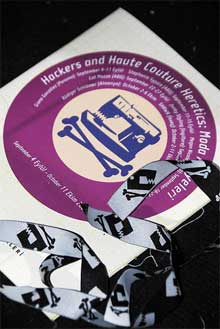 I need a little break from my ars electronica/conflux/china reports so i´m going to take it right now and declare today “Knit and Snip Day” with two posts related to fashion.
I need a little break from my ars electronica/conflux/china reports so i´m going to take it right now and declare today “Knit and Snip Day” with two posts related to fashion.
The first one spotlights the outcome of a workshop organized in connection with the Hackers and Haute Couture Heretic by Otto von Busch. If you´re in Istanbul, do check out the exhibition. Hackers and Haute Couture Heretic, which runs at the Garanti Gallery until October 11, investigates how fashion can be recircuited and transmutated through hacking, shopdropping, and craftivism strategies.
When fashion comes under the scrutinizing eyes of theory, it is often considered as a spell from the black arts and is “revealed� as fools’ play, ridiculed deception, or capitalistic conspiracy. Very rarely does theory approach the emancipatory, magical, extravagant, or luminous sides of fashion. This leads to a situation where critical designers almost automatically place themselves (or are being placed) into an anti-fashion position, enacting a “fashion drop-out� statement, and become producers of singular objects commenting on fashion from the outside. Seldom are their critical expressions actually worn or reach an elevated position in the fashion system.
VakkoVamps aims to act as a negotiating bridge between the critical standpoint and the glamorous shimmer of high fashion. VakkoVamps explored how contemporary hacktivism and political engagement can step beyond mere defiance, engage into a dialogue and look for a position beyond the dialectical pro- or anti-positions.
Artists/designers participating to the Hackers and Haute Couture Heretics project were invited to engage in a collaborative collection with Turkish upmarket fashion brand Vakko.
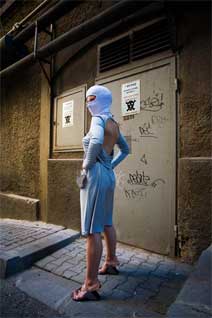
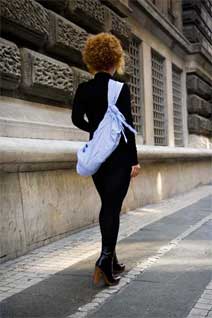
This connection with a large actor representing the glamorous side of fashion ensured that the critical crowd was not playing with only like-minded souls. The approach deliberately tried to reach beyond the traditional audience of reform and alternative fashion to instead engage with the level of fashion where dreams are produced.
The intended working process of VakkoVamps was as follows:
1. Take a garment from Vakko’s last season to reform into something facing the new season or enhancing other values.
2. This Vakko garment is sent as “homework� to the participants. They have a month to remake it, document the process into an instruction for Vakko, and send these two back.
3. Vakko will reproduce the reformed or “hacked� garment prototype in 10 copies.
4. The garment will be styled, photographed, advertised as a “real� garment from the brand.
5. The new copies will be sold in the Vakko boutiques. The original prototypes exhibited at Garanti Gallery.
These collaborative processes being always a matter of negotiations and compromises, the full process could not be pulled through. The ten-copy reproduction of the prototypes, the fashion shootings, and the selling of the garments in Vakko stores were not to be realized. Nevertheless, participants produced their own fashion photographs of the hacked Vakko garments for the exhibition.
Despite this partly successful cooperation, the outcome of the VakkoVamps is not so much a set of garments or objects as much as a series of methods for exchange and dialogue between two fields that are usually separated.
Follow the hacking methods: download booklet [pdf].
Images of the VakkoVamps garments by Laleper Aytek.
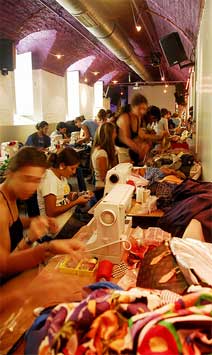
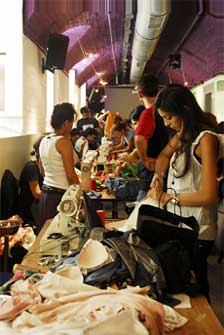
The pictures above were taken during the Swap-O-Rama-Rama, a concept started by Wendy Tremayne a few years ago, and now shared under creative commons. Swap-O-Rama-Rama is a clothing swap and series of do-it-yourself workshops in which a community explores creative reuse through the recycling of used clothing. A Turkish edition of the event took place earlier this month in the framework of Hackers and Haute Couture Heretic. All images courtesy of Otto von Busch.
Related: Interview with Otto von Busch.
